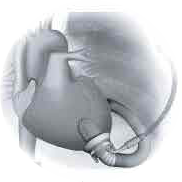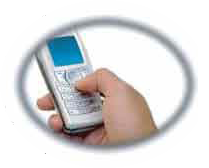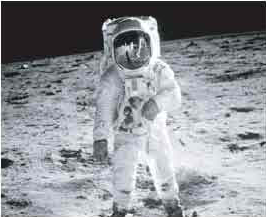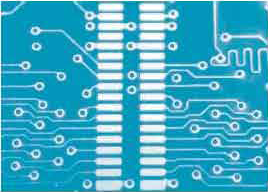1. Warm up activity:
Discuss the following questions in pair.
□ What advantages has technology brought to everyday life?
□ How do science and technology make life better?
□ What, in your opinion, are some of the greatest scientific achievements so far?
2. Read the passage which discusses tome of the greatest scientific achievements in the hut fifty years:
We human beings tend to forget how far we have come as a specie a in a relatively short period of time. It was only in the 1870s when we had the first house that was lighted with electricity. Crisis just started to become available 100 years ago. Charles Lindbergh made the first trans Atlantic flight in 1927. Televisions didn't become widely available until after World War n. In other words, the advances humankind has made in a relatively short period of time have been nothing short of extraordinary. Perhaps just as extraordinary is bow we tend to simply adapt to these incredible changes, not realising how completely our world has been altered in a short span of time. With that in mind, it is worth looking hack at some of the amazing scientific advances we have made in the last few decades.
The Artificial Heart: There is nothing that piques the interest of a human being quite as much as the prospect of living a longer life. Implanting a person with an artificial heart in 1982 was an extraordinary step towards increasing the human lifespan. A Seattle based dentist, Dr. Bamey Clark, was the first person implanted with the Jarvik-7, an artificial heart intended to last a lifetime. The Jarvik-7 artificial heart was designed by Robert Jarvik. Though the patient survived 112 days, it was a huge step towards the development of heart transplant surgery. One day, more advanced versions of artificial organs will likely allow us to live much longer and more productive lives. When we get there, we will owe a lot to Robert Jarvik's artificial heart.
Cell phones: Phones have been around since the late 1800s, but cell phones made their appearance only in the 1990s. Today, by some estimates, more than 100 million people in Bangladesh and more than 4.6 billion people worldwide have mobile phones Anything that is useful and spreads so fast has to be considered one of the greatest inventions of all time. Just two decades ago, in Bangladesh, even land lines were difficult to obtain, let alone mobile phones. Today people from all social strata use cell phones, from street vendors to business executives in luxury cars, and from villagers to urbanites. Since May 2015, Bangladesh joined its South Asian neighbour* India (862 million) and Pakistan (122 million) on the list of countries with 100 million or more mobile phone users. The other countries on the list are China (one billion users), Russia, Brazil, the United States, Indonesia, Japan, Germany, the Philippines and Nigeria.
The Personal Computer: Today, we take for granted that we have one machine that allows us to access the Internet, do word processing, use a calculator, watch TV, play games and do a host of other things. But the personal computer only became available to consumers in 1974. Things really took off when Microsoft Windows was introduced in 1985 and it's good that it was since without the prevalence of personal computers, the Internet wouldn't have had nearly as big an impact as it has ever since.
The First Communications Satellite: People on Earth may take for granted today's high-tech world of cell phones, GPS and the satellites high above the planet that make instant communication possible. But it all began 50 years ago with one giant space balloon. 10 July 1962 marked the birth of satellite communications. On this day the Telstar satellite commenced its journey into space and became the first ever active communications satellite. It carried the first live trans Atlantic TV broadcasts, Telstar was built by a team at Bell Telephone Laboratories in USA and incorporated many innovations such as the transistor and the 3,600 solar panels that powered the satellite. Telstar produced 14 watts and relayed its first and non-public television pictures on 11 July 1962. The satellite could carry 600 voice calls and one black-and-white TV channel from an egg-shaped orbit. Today, we use satellites for GPS, TV, radio, weather tracking, military surveillance, space exploration and global communications, among other things.
The Moon Landing: For thousands of years, human beings had looked to the heavens and dreamed of walking on the moon. In 1969, as part of the Apollo 11 mission, Neil Armstrong became the first person to accomplish that dream, followed only minutes later by Buzz Aldrin. Their accomplishment gave people around the world the hope of future space exploration. In feet, it was a feat that was so fantastic that there are still conspiracy theorists who insist it could not be possible. Putting a man on the moon is perhaps man's most inspiring accomplishment; it opened the door to future space travel and led to a number of spin-off inventions including flame resistant textiles used by firefighters, invisible braces, improved satellite dishes, and better medical imaging.
The Internet/World Wide Web: The ARPANET, The first Internet, was invented in 1969 and the public only had access to the World Wide Web starting in 1993. Today, just 22 years later, the web has revolutionized the dissemination of information, created a new multi-trillion dollar economic phenomenon, played a role in revolutions, and has interconnected much of the globe. It has also made it possible for people all over the planet to reach out and touch someone.
The Microchip: A microchip is a set of electronic circuits on one small plate (chip) of semiconductor material, normally silicon. Microchips are used in virtually all electronic equipment today and have revolutionized the world of electronics. The forerunner to the microchip was invented back in 1959, but it didn't really start to take off until the 1980s. Since then, incredible advances in microchips have made it possible for them to be cheaply and efficiently used for calculators, personal computers, pet identification, automatic teller machines, satellites, pacemakers, cell phones, and microwave ovens among many other products.
3. Answer (he following questions:
a. By 2015, how many countries in the world had a hundred million or more mobile phone users?
b. What is Jarvik-7? Why is it so significant in the advancement of medical science?
c. What is the most important function performed by the Telstar satellite?
d. There are some conspiracy theorists who insist that no human being ever set foot on the moon. Do you support their views? Give reasons for your answer.
e. You have read about seven amazing achievements of science in the last fifty years. In your view, which of the achievements has the strongest influence on human beings? Explain why.
4. Complete the table below with Information given In the text Use no more than three words and/or numbers in each of the blank spaces.
Scientific advancements in
the last fifty years
|
|
When
|
What
|
1870s
|
Electricity was successfully
used for (a) …………
|
(b)………
|
The first aircraft flew across the Atlantic ocean.
|
1982
|
Successful (c) ………… of
artificial heart In human body.
|
(d) ………
|
A prototype of the microchip was Invented.
|
1985
|
Microsoft (e) ……… an operating system called
Windows.
|
(f) … 1962
|
First television pictures were telecast via
satellite.
|
1969
|
|
1993
|
People started to have (h) …… to the World Wide Web.
|
5. Find out the meanings of the following words; then make sentences with them.
a. urbanite
b. pique
c. implant
d. transplant
e. satellite
f. orbit
g. spin-off
h. brace
i. imaging
j. spam
6. Make five sentences from the substitutions table below. Make sure the sentences have the correct information given in the text.
Note: The parts of sentences in the first column are examples of gerunds/gerund phrases.
a. Implanting a person with an
|
is
|
an example of the abuse of
the
|
artificial heart in 1982
|
Internet.
|
|
b. Putting a man on the moon
|
an amazing step towards a
longer life
|
|
was
|
span for humans.
|
|
c. Using microchips in useful
|
revolutionized the world of
electronics.
|
|
devices
|
has
|
|
d. Spamming
|
perhaps man's most inspiring
success.
|
|
e. Putting a giant space balloon
|
The first
initiative of satellite
|
|
50 years ago
|
communication.
|
|
7. Complete the sentences below with the words given in the box.
however although when let alone until
i. Television sets were not widely available………………. the end of the Second World War.
ii. The 10th of July, 1962 marked the birth of satellite communication ………………. the Telstar satellite was sent to the space.
iii. Twenty-years ago mobile phones were not easily available in Bangladesh, ………………. fixed phones.
iv. The first patient implanted with an artificial heart survived only 112 days, ………………. it marked a huge progress in the field of heart transplantation.
v………………. the Internet has revolutionized the means of communication globally, it has invited some hazards too.
If you want to read the next lesson of this unit please click the link below:
Lesson 2: Science and Technology Against an Age-old Disease
Lesson 2: Science and Technology Against an Age-old Disease










0 Comments:
Post a Comment